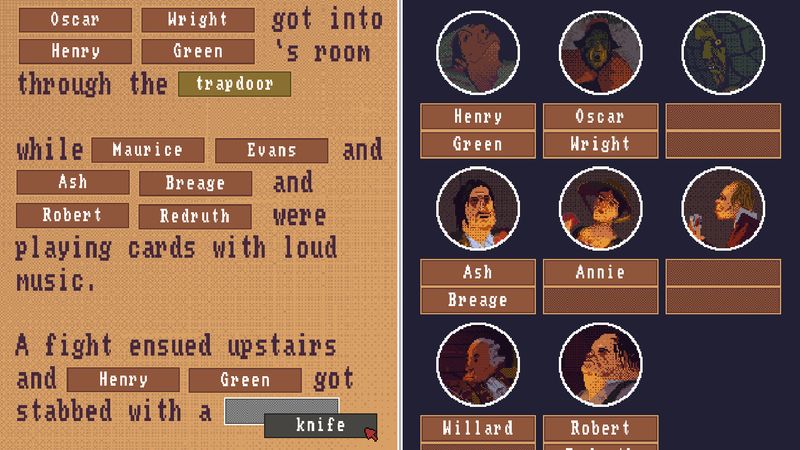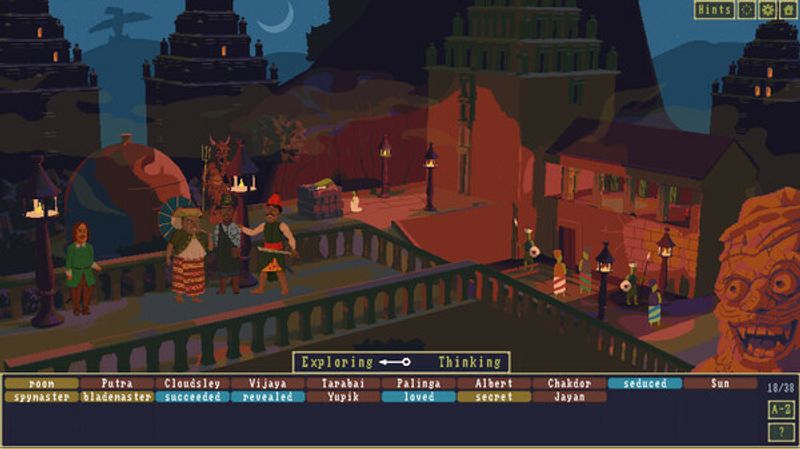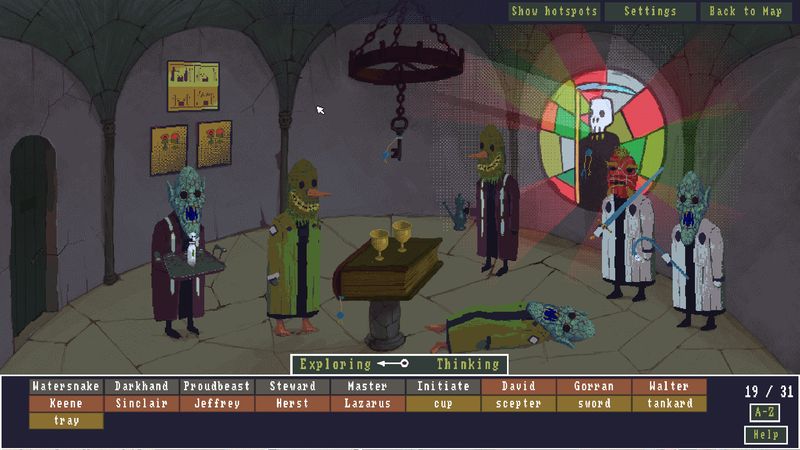I must confess that The Case of the Golden Idol surprised me from the moment I booted it up. Color Gray Games developed this detective puzzle adventure, and Playstack brought it to players worldwide. The game challenges you to adopt a serious yet creative mindset. Right away, I felt drawn in by how it demands thorough investigation rather than encouraging simple guesswork. The detective narrative spans twelve gruesome death cases, urging you to gather evidence, build coherent theories, and unmask the truth. Below, I present my in-depth review, touching on gameplay mechanics, story, visuals, sound, and more.
Overall Impressions
The Case of the Golden Idol offers a refreshing addition to the detective puzzle genre. It doesn’t lean on flashy action scenes or fast-paced combat. Instead, it rewards methodical exploration and sharp observation. I felt impressed by the clarity of its design—every clue, line of dialogue, and scene fits into a larger puzzle. The structure reminded me of Return of the Obra Dinn, though this title brings enough new twists to stand on its own. With its systematic approach to puzzle-solving, the game transformed my playthrough into a satisfying journey of discovery.

Gameplay Mechanics
The mechanics emphasize attention to detail and precision. Each chapter ties its clues back to the overarching narrative, which I found incredibly satisfying. The gameplay feels responsive, offering freedom to explore without pressure. While some reviews mention that notebooks don’t become essential until later stages, I found every minute spent examining items worthwhile. The clean interface and intuitive controls made navigation smooth and kept key details close as puzzles became more complex.
Every part of the story includes a corresponding clue, maintaining consistency in the design. Even when the puzzles grow more challenging, the game introduces smooth transitions and clear instructions. I especially enjoyed the DLC puzzles that required me to revisit earlier clues I had jotted down. This approach reinforces the idea that nothing in the game is wasted. My only minor gripe lies in the relatively short playtime, which might leave marathon players wanting more. But if you’re planning short evening sessions, the game offers an engaging, perfectly-sized challenge.

Story and Characters
The narrative unfolds through a series of cases that challenge your deductive reasoning. My detective steady pursuit of every side detail allowed me to gradually piece together the puzzle of a twisted series of murders. I enjoyed how the story invites players to create personal theories. The game encourages you to take notes and connect disparate clues. Although the plot might seem to lack depth compared to sprawling narratives, it excels in its layered storytelling. Each case builds upon the previous one, and I found that every chapter rewards careful scrutiny.
The characters may not come with deep backstories, but they serve as effective conduits for moving the mystery forward. They are shadows in a larger tapestry, whose motivations and reactions become more intriguing with each new evidence discovered. I particularly liked how every suspect came with its own set of hints and misdirections. The design of the interrogations and clue interconnections adds an intellectual challenge. This interplay creates an atmosphere that is equal parts suspenseful and gratifying. I also found that the game encourages a methodical tone reminiscent of classic detective literature.

Visuals and Graphics
The game’s art style deserves special mention. Its visuals contribute greatly to building the desired ambience. The artistic design, reminiscent of noir aesthetics, is executed with clarity and subtlety. I was impressed by how the art style adapts to each chapter. Certain visual cues and color schemes boost your intuitive understanding of each scene. You can tell that much thought was put into detail by color designers. The layout also helps accentuate the grisly nature of the incidents while preserving a balanced look that does not overwhelm the player.
Despite the straightforward approach, the visuals keep you fully immersed. I found that the artistic design and visual presentation enhance the experience, making me feel like I was inside a living painting. Every frame was composed with enough precision to support the clues you need to solve the mystery. The ambient details in backgrounds, character expressions, and textural nuances contribute to an enthralling game world.

Sound and Music
The audio complements the visuals with finesse. The soundtrack sets the stage for mystery and introspection. I enjoyed the way the music adapts to situations, transitioning smoothly from moments of tension to those of calm deduction. Sound effects also play a crucial role; they emphasize key discoveries without distracting from the gameplay. I found that the audio design works in concert with the narrative, reinforcing emotion and setting the overall tone.
In addition to the background score, the game integrates voice acting to deliver character dialogues. Although not every line is voiced, the excerpts that are recorded fit naturally into the narrative. The result is immersive and supports the intellectual ambiance that the game strives to achieve. The audio cues guide you through puzzles promptly, making the experience feel both engaging and authentic.

Difficulty and Replayability
I found that The Case of the Golden Idol is challenging in a measured way. The game pushes you to think critically while ensuring that every action you take has meaning. The learning curve is gentle at first but quickly proves to be rewarding as the complexity increases. The design decision to break the story into chapters adds a layer of accessibility and replayability. You can easily pick up where you left off without losing the thread of the overarching mystery.
The reward for replaying or even for reaching for hints is substantial. The game makes you feel smart as you navigate each case, akin to solving an intricate real-life mystery. The balance between difficulty and satisfaction is a testament to careful design. I believe that this balance, along with the inherent challenge, ensures that the game remains memorable even after subsequent playthroughs.

Final Thoughts and Rating
The Case of the Golden Idol is a polished and engaging detective experience that stands out in its genre. The attention to detail in gameplay, visuals, and audio elevates its overall appeal. I appreciated the deliberate pace at which complexity is introduced. Every element is stitched together to make the investigation feel rewarding and intellectually stimulating. While the relatively shorter playtime might not satisfy those seeking a marathon puzzle session, the game is ideal for thoughtful, deliberate detective work.
Despite minor concerns about resolution in certain story arcs, the overall experience remains top-notch. The narrative rewards you for every piece of evidence collected. It forces you to engage with every detail and encourages a thorough exploration of every chapter. As a completionist, I find these qualities particularly satisfying. In the grand landscape of detective puzzle adventures, The Case of the Golden Idol earns my lasting respect.

I award this meticulously crafted detective game 4.5 out of 5 stars. I encourage fellow completionists and discerning players to immerse themselves in this unique journey. Behind the scenes, Color Gray Games reveals a passion for detail and a commitment to an immersive, clue-based narrative. If you enjoy detective stories where every detail matters, I highly recommend you give this game a thoughtful try.

